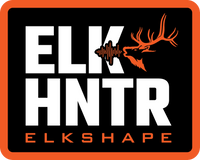Want fast gains? Find Out Which Muscles are the Overachievers of Your Body!
Welcome to your ultimate guide on muscle growth, where I’ll break down which muscles grow the fastest and why. Ready to optimize your workouts for maximum gains? Let’s dive in!
Who doesn’t want to see results fast? Fast gains mean you're maximizing your efforts, optimizing your time, and staying motivated. It’s about making every rep count and getting that payoff sooner. Whether you're looking to fill out a shirt, boost your strength, or just feel stronger, knowing which muscles grow the fastest can help you tailor your workouts for maximum impact.
Muscle Groups That Grow Fast
- Leg Muscles (Quadriceps and Hamstrings):
- Growth Rate: Fast.
- Reasons: Heavily engaged in daily activities like walking, running, and squatting. Compound movements such as squats and deadlifts provide strong stimuli for growth.
- Training: Respond well to high-intensity, compound exercises.
- Back Muscles (Latissimus Dorsi and Trapezius):
- Growth Rate: Fast.
- Reasons: Large muscle groups involved in many compound exercises like deadlifts, rows, and pull-ups.
- Training: Benefit from heavy lifting and a variety of pulling movements.
- Chest Muscles (Pectoralis Major):
- Growth Rate: Fast.
- Reasons: Respond well to compound exercises such as bench presses and push-ups.
- Training: Effective with a mix of heavy and moderate weights with varied angles.
- Shoulder Muscles (Deltoids):
- Growth Rate: Fast.
- Reasons: Engaged in pressing and lifting movements, especially the anterior and lateral parts.
- Training: Benefit from a combination of compound and isolation exercises.
- Arm Muscles (Biceps and Triceps):
- Growth Rate: Fast.
- Reasons: Frequently targeted with isolation exercises and involved in many compound movements.
- Training: Respond well to high-volume and varied rep ranges.
Muscle Groups That Grow Slowly:
- Calves (Gastrocnemius and Soleus):
- Growth Rate: Slow.
- Reasons: High endurance muscles, often require high-repetition and high-frequency training to see growth.
- Training: Respond better to a high volume of work and varied foot positions.
- Forearms (Flexors and Extensors):
- Growth Rate: Slow.
- Reasons: Frequently used in daily activities, thus accustomed to a lot of work. Require targeted training for noticeable growth.
- Training: Benefit from high repetitions, grip strength exercises, and consistent training.
- Abdominal Muscles (Rectus Abdominis, Obliques):
- Growth Rate: Slow.
- Reasons: Typically have a high endurance capacity and are often engaged in daily movements.
- Training: Require a combination of resistance training and low body fat percentage to become visible.
- Lower Back Muscles (Erector Spinae):
- Growth Rate: Slow.
- Reasons: Primarily stabilizer muscles, need a balance of strength and endurance training.
- Training: Benefit from compound lifts and focused lower back exercises.
Why Muscles Grow at Different Speeds
Size and Function: Fast-growing muscles tend to be larger and involved in significant movements, while slow-growing muscles are often smaller, stabilizers, or high-endurance muscles.
Training Response: Fast-growing muscles respond well to compound movements and heavier weights, whereas slow-growing muscles may need higher repetitions, varied exercises, and more targeted training.
Daily Usage: Muscles used heavily in daily activities often grow slower due to their adaptation to constant usage, while those less engaged in daily routines might respond faster to targeted training.
Intensity and Volume: Fast-growing muscles benefit from high-intensity, lower-volume training, while slow-growing muscles often require higher volume and frequency.
Adaptation: Slow-growing muscles are typically more resistant to growth due to their high level of endurance and daily activity involvement, requiring more varied and persistent efforts to see noticeable changes.
Tips for Maximizing Muscle Growth
So first things first. You gotta lift weights. When you stress a muscle properly or give it sufficient tension or damage it all of which occurs through resistance training, your muscle has no option but to change. It needs to grow and in order for that protein synthesis to occur. They need essential amino acids which are found in protein. So try for one gram of protein per pound of body weight per day for optimal protein synthesis and thus to maximize your chances at building new muscle or if you aren't tracking your protein intake, make sure every meal you eat has a sizable amount of protein. A good amount of elk, deer, bear, chicken, beef, bison, turkey, or salmon. On that note to ensure you drive your muscle growth more effectively. I would advise you to enter a caloric surplus of 300 to 500 calories and if you can't track your calories aim for three to five meals a day. All of which consist of a high protein source, a complex carb and some vegetables and thus have a healthy balance of micro and macronutrients. Training is by far the most important factor when it comes to building muscle and so the first step to make sure you're training properly is progressively overloading.
- Progressive Overload: Gradually increase the weight or resistance to challenge your muscles.
- Proper Nutrition is key. Make sure you eat enough protein and calories. They support muscle repair and growth.
- Rest and Recovery: Allow muscles to recover between workouts. This prevents overtraining.
Read about best workout split for hypertrophy
Effective Workouts for Fast Growth
- Compound movements engage multiple muscle groups. They promote overall growth. Examples include squats, deadlifts, and bench presses.
- High-Intensity Training: Incorporating high-intensity intervals can stimulate muscle growth and improve endurance.
- Change your workout routine periodically. This will keep challenging your muscles in new ways.
As you get stronger as you get bigger the progress you see will slow down. When this happens other factors come into play which are equally if not more important to adding new muscle. For example your Tempo. Time under tension leads to muscle growth. You have to control the eccentric portion of your reps for maximum recruitment of muscle fibers. You have to feel the stretch at the bottom of your rep and you have to hold the contraction at the top of your rep to establish a mind muscle connection. The more of an isolated mind muscle connection you have the greater your muscle building potential is.


2 comments
Best explanation I have received so far but don’t you recommend supplements?
Best supplement that I may use